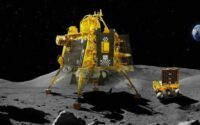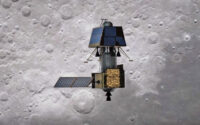India’s Historic Journey to the Moon: Chandrayaan-1
Introduction
On October 22, 2008, India made history by successfully launching its first lunar exploration mission, Chandrayaan-1. This remarkable achievement marked a significant milestone in India’s space program and established the country as a formidable player in the field of space exploration. In this article, we will delve into the details of India’s maiden voyage to the moon, Chandrayaan-1, its objectives, accomplishments, and the broader implications for India’s space endeavors.
The Birth of Chandrayaan-1
The Indian Space Research Organisation (ISRO) initiated the Chandrayaan-1 project in 2003, with the primary goal of exploring the moon’s surface and gaining a deeper understanding of our celestial neighbor. The name “Chandrayaan” is derived from two Sanskrit words: “Chandra” meaning moon and “Yaan” meaning vehicle, reflecting the mission’s purpose – a moon vehicle.
Objectives of Chandrayaan-1
- Mapping the Lunar Surface: Chandrayaan-1 aimed to create a detailed 3D map of the moon’s surface, including its topography, mineral composition, and distribution of elements.
- Searching for Water: One of the most significant objectives was to search for water molecules (H2O) on the moon’s surface, which could have implications for future lunar colonization.
- Investigating the Moon’s Exosphere: The spacecraft was equipped to study the moon’s thin exosphere, analyzing the composition and variations in its density.
- Impact Probe: Chandrayaan-1 carried an impact probe, designed to crash into the moon’s surface and analyze the debris, providing valuable insights into the lunar crust.
Chandrayaan-1’s Instruments and Technology
The spacecraft was equipped with a suite of 11 scientific instruments, including spectrometers, imagers, and radar systems. These instruments allowed Chandrayaan-1 to conduct a comprehensive study of the moon’s surface, its mineral composition, and the presence of water.
One of the most significant discoveries made by Chandrayaan-1 was the presence of water molecules on the moon’s surface. This finding not only expanded our understanding of lunar science but also had implications for future lunar exploration and the potential establishment of lunar bases.
Chandrayaan-1’s Journey and Challenges
The launch of Chandrayaan-1 took place from the Satish Dhawan Space Centre in Sriharikota, India, using the PSLV-XL rocket. After a successful launch, the spacecraft embarked on a 384,000-kilometer journey to reach the moon’s orbit. However, Chandrayaan-1 faced several challenges during its mission, including issues with its star sensors and the sudden loss of communication with the spacecraft in August 2009.
Despite these challenges, Chandrayaan-1 had already achieved a significant portion of its mission objectives, providing valuable data and insights into lunar science. The mission was eventually declared over in August 2009, when ISRO officially lost contact with the spacecraft.
Legacy and Implications
Chandrayaan-1 left an enduring legacy for India’s space program. It demonstrated the country’s capability to design, launch, and operate a mission to the moon, joining an elite group of spacefaring nations with lunar exploration missions. The discovery of water molecules on the moon’s surface opened up new possibilities for future lunar missions, including the potential utilization of lunar resources for human space exploration.
Furthermore, Chandrayaan-1 paved the way for subsequent lunar missions, such as Chandrayaan-2, which aimed to build upon the successes of its predecessor. India’s continued involvement in lunar exploration and its growing expertise in space technology are a testament to the nation’s commitment to advancing our understanding of the cosmos.
Conclusion
India’s first space mission to the moon, Chandrayaan-1, was a groundbreaking achievement that showcased the country’s growing prowess in space exploration. Despite facing technical challenges and the premature end of its mission, Chandrayaan-1 provided invaluable data that expanded our knowledge of the moon and its resources. This mission serves as a symbol of India’s determination to explore the cosmos and contribute to humanity’s quest for knowledge beyond Earth. As India continues to develop its space capabilities, the legacy of Chandrayaan-1 will undoubtedly inspire future generations of scientists and engineers to reach for the stars.


